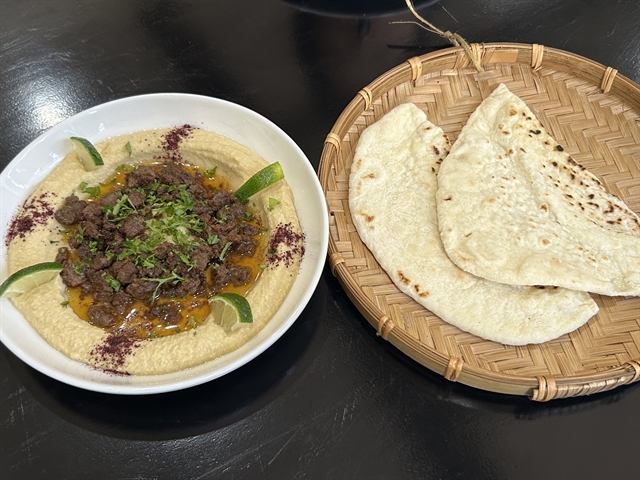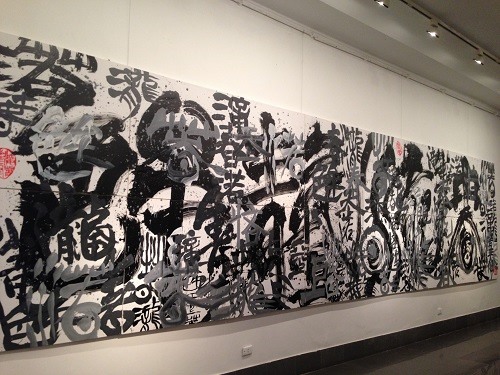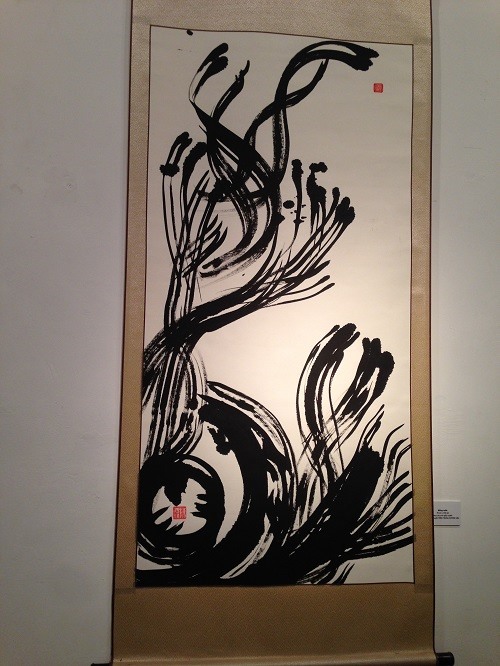 Life & Style
Life & Style

About 40 calligraphic works by leading artists are now on display at the Việt Nam Museum of Fine Arts to welcome spring and the beginning days of Tết (Lunar New Year).
 |
| All hands on deck: The largest work, at 2m by 8m, was created by four calligraphers. VNS Photos Nguyễn Bình |
HÀ NỘI — About 40 calligraphic works by leading artists are now on display at the Việt Nam Museum of Fine Arts to welcome spring and the beginning days of Tết (Lunar New Year).
It is the first time contemporary calligraphy works are being introduced at the museum. The show displays the works of Nguyễn Quang Thắng, Phạm Văn Tuấn, Nguyễn Văn Thanh and Trần Trọng Dương. All of them are working at the Institute of Hán - Nôm Studies.
The exhibition, entitled Nét Xuân (Charming of Spring) - Art of Nôm, is co-hosted by the Việt Nam Museum of Fine Arts and the Institute of Hán - Nôm Studies.
"It is a good chance for the public to see Vietnamese traditional calligraphic art," said Vương Duy Biên, deputy minister of Culture, Sports and Tourism. "Traditional calligraphy works are made by the calligraphers to call to mind the beauty of traditional cultural custom on the occasion of Tết."
The works, inspired by the poems of late renowned poets in Việt Nam, are written in Nôm. Màu Trời Sông Xuân (Blue Sky Spring River) is the largest work, sized at 2m by 8m. It is made by all the calligraphers, featuring the text of Nguyên Tiêu, a poem by President Hồ Chí Minh.
The president wrote the poem in 1948 while living in the Việt Bắc Northern Liberated Zone during the national resistance against the French colonization. With four sentences only, the poet crafts the image of a boat under the full moon in the spring, according to calligrapher Thắng. There are about 10 works are inspired by the Nguyên Tiêu poem.
 |
| Avant-garde: A work measuring 70cm by 140cm by Trần Trọng Dương. |
"The poem inspires us to make the work on canvas with avant-garde style," said Thắng. "We want to introduce new and strange factors to calligraphy, combining the classic style of the orient with the abstraction expressionism of the west and zen of Japan."
Thắng is also the exhibition curator and created about 15 works in total. Other his works are inspired by poet Nguyễn Du, who lived in the 18th century. He is a member of Tiền Vệ (Avant-garde) Gang of Five and has exhibited his calligraphy works in Việt Nam and abroad such as mainland China, Taiwan and the US.
The calligraphy pieces include 16 traditional calligraphy works and 25 avant-garde calligraphy works. Dương has seven works based on poems by Nguyễn Du and Hồ Chí Minh. He holds four quill pens at the same time to draw producing the different shades of the works.
Tuấn and Thanh drew on poems by Nguyễn Trãi in the 14th century and King Trần Nhân Tông in the 13th century. Most of their works are in the avant-garde calligraphy style, which is one of three kinds of calligraphy in Việt Nam. The others are traditional calligraphy and Vietnamese romanised character calligraphy.
Both traditional and avant-garde calligraphy are based on Hán (Han Chinese script) and Nôm characters. Calligraphy comes from China and has been seen as an art form in Việt Nam, South Korea and Japan. Vietnamese romanised character calligraphy has been widely practiced in the last century across Việt Nam.
The exhibition will run until March 2 at 66 Nguyễn Thái Học Street. — VNS